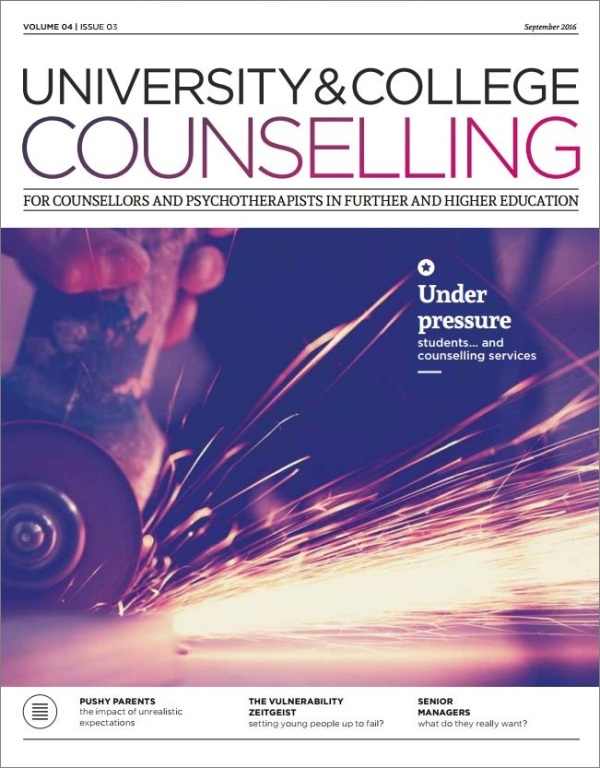In this issue
Features
The effects of a ‘vulnerability zeitgeist’ in universities: real need or real life?
Kathryn Ecclestone explores, and challenges, the vulnerability narrative that has emerged within education
When parents push too hard, children can buckle
Parents can unintentionally push their children to breaking point. Tanith Carey highlights the impact on students of high parental aspirations and over-involvement in their children’s lives
Transition distress: a psychological process (free article)
Gareth Hughes reveals how transitioning to further and higher education can trigger distress across a broad spectrum of students
Suicide and transitions in the university setting: where are we now?
Research into student suicide reveals important links to times of transition. Sharon Mallon and Nicky Stanley report
University counselling services in straitened times: survival of the fittest?
Ben Lewis, Past Chair of AMOSSHE, underscores the value of embedded counselling services and describes the challenges facing our services in coming years
Divisional news
Notes from FE
Mary Jones
Notes from the chair
Jeremy Christey
Notes from HUCS
David Mair

A pdf of this issue is available in the University and College Counselling archive
From the editor
Welcome to a new academic year. As this issue lands on your doormat, thousands of students are preparing for a new adventure, embarking on courses at our institutions. Some are travelling great distances to be with us – others may live round the corner. Whatever their origins, we can be sure that young people today do not face an easy task in negotiating the developmental, academic and social demands they encounter in further and higher education.
As we gird our loins for another hectic year, it’s good to refresh our understanding of how the transition into FE/HE may be experienced by students: Gareth Hughes reports on research findings into student transition, outlining a model to inform our interventions. Sharon Mallon and Nicky Stanley then explore links between transition and risk of suicide. It is never easy to handle big change in life and some students may feel overwhelmed to a dangerous level.
Other contributors highlight how clients who seek our help are simultaneously pressured to outshine their peers, while having their autonomy and resilience undermined by a narrative which suggests that common human emotions such as anxiety and sadness need both treatment and compensatory measures. Kathryn Ecclestone vividly describes the dangers of educational environments which communicate to students how fragile they are, while Tanith Carey underscores how well-intentioned parental aspirations can backfire, creating stress, insecurity and depression in young people. We work at the intersection of conflicting narratives: huge pressure to succeed on the one hand, and messages that undermine autonomy on the other. It’s not an easy position in which to find ourselves.
And at a broader level, we are impacted by reforms of higher education and funding issues, channelling down into the work of student services generally. Ben Lewis, Past Chair of AMOSSHE, gives us a perspective on how these changes are already affecting counselling services, and on how senior managers’ thinking about student support is evolving: vital information for us to stay ahead of the game in conceptualising both student and manager expectations.
As always, the year ahead promises to be busy and demanding. I hope you find our journal offers supportive and informative input along the way.
David Mair
Editor
david.mair@bacp.co.uk
